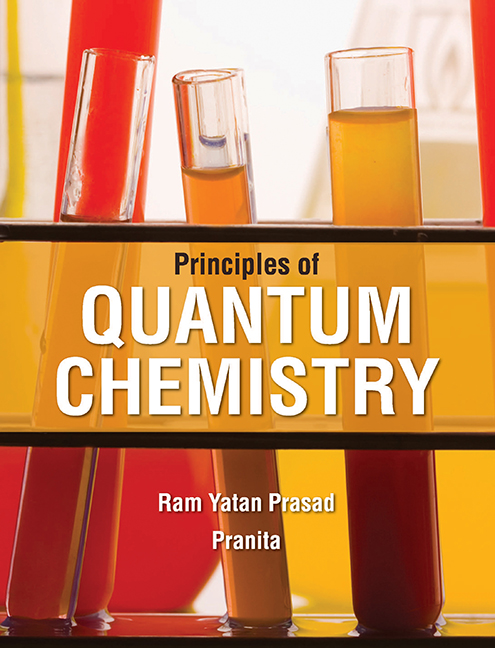Book contents
- Frontmatter
- Dedication
- Contents
- List of Figures
- List of Tables
- Foreword
- Preface
- 1 Quantum Theory
- 2 Wave–Particle Duality
- 3 Mathematical Techniques
- 4 Quantum Mechanical Operators
- 5 Postulates of Quantum Mechanics
- 6 The Schrödinger Equation
- 7 Playing with the Schrödinger Equation
- 8 Hydrogen Atom
- 9 Approximate Methods
- 10 Diatomic Molecules
- 11 Multi-electronic Systems
- 12 Polyatomic Molecules
- 13 Hückel Molecular Orbital Theory/Method
- 14 Density Functional Theory
- Glossary
- Appendix I
- Appendix II
- Appendix III
- Model Question Papers
- Index
1 - Quantum Theory
Published online by Cambridge University Press: 02 December 2022
- Frontmatter
- Dedication
- Contents
- List of Figures
- List of Tables
- Foreword
- Preface
- 1 Quantum Theory
- 2 Wave–Particle Duality
- 3 Mathematical Techniques
- 4 Quantum Mechanical Operators
- 5 Postulates of Quantum Mechanics
- 6 The Schrödinger Equation
- 7 Playing with the Schrödinger Equation
- 8 Hydrogen Atom
- 9 Approximate Methods
- 10 Diatomic Molecules
- 11 Multi-electronic Systems
- 12 Polyatomic Molecules
- 13 Hückel Molecular Orbital Theory/Method
- 14 Density Functional Theory
- Glossary
- Appendix I
- Appendix II
- Appendix III
- Model Question Papers
- Index
Summary
In the eighteenth century, it was believed that light consisted of small particles as earlier postulated by a famous scientist Newton in his corpuscular theory. Various experimental studies were carried out later, which supported the wave theory of light. In the later part of the nineteenth century, a large number of experimental facts/observations came to light, which could not be explained by wave theory. One of the important experimental studies was performed by various scientists on black-body radiation, which led to the development of quantum theory. The pioneers among the scientists in the field of black-body radiation were Stefan−Boltzmann, Rayleigh−Jeans, Wein and Max Planck. A brief discussion on black-body radiation and distribution of energy in temperature radiation is presented in the subsequent sections.
Black-body radiation
A black-body is defined as a perfect absorber and emitter of radiation. Actually, it absorbs all the radiations falling on it, without reflecting any. Experiments have shown that all hot bodies when perfectly blackened, gives rise to a thermal spectrum which depends on the temperature only, and not on the chemical composition or the material the body is made of.
In practice, black-body radiation is studied by making a cavity, which is insulated so that the only energy that can be absorbed is the energy supplied in the form of heat to enhance the temperature of the cavity. The cavity is evacuated and a small hole is made on one side of the apparatus through which the radiation can pass. One approximation suggests that the radiation coming from the hole in the cavity becomes a better sample radiation inside the cavity. In short, we can say that a black-body, therefore, comprises the following:
• It must emit radiation of the same character and intensity as it absorbs.
• It must emit radiation of nearly all wavelengths, and at a particular temperature
• It must absorb radiations of all wavelengths completely.
The intensity radiation emitted from the hole is then studied as a function of wavelength at various temperatures of the cavity. On the basis of the experimental results of the black-body radiation, a graph between energy distribution El andwavelength l is plotted at various temperatures. It is shown in Fig. 1.1.
- Type
- Chapter
- Information
- Principles of Quantum Chemistry , pp. 1 - 34Publisher: Foundation BooksPrint publication year: 2014

